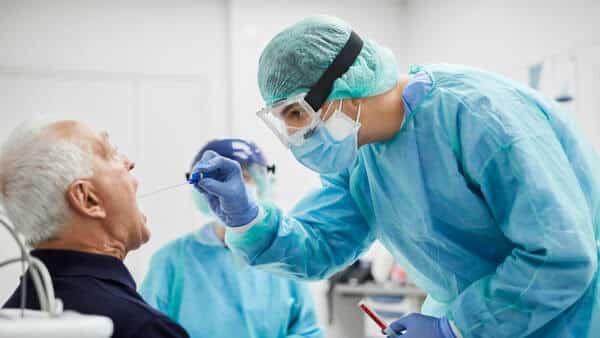Stefan De Vriese: lab manager with a heart for the environment
The Analysis – Stefan De Vriese
In the column ‘The Analysis’ we look at the professional memories and dreams of our ECCA employees. But we also look for a few personal confessions. Today, none other than lab manager Stefan De Vriese is at the forefront
Passport
- Name: Stefan De Vriese
- Function: Lab manager at ECCA & BIOTOX
- Age: 49 years
- Number of years with ECCA: 18 years
- Hobbies: volleyball referee, attending music festivals, sawing firewood in nature
What is your specialisation and which assignments do you find most interesting?
“My researcher’s heart starts beating a little faster when it comes to the environment. I am particularly intrigued by the ecotoxicological themes and asbestos. Because quality is of the highest importance to me, I like to carry out external and internal audits. In this way, we can improve the analysis result. Since a few years ago, the ‘nutrition’ and ‘bacteriology’ departments have also been part of my responsibilities. Every day I increase my knowledge in this area: fortunately, I can rely on experienced employees”.
Which trend will determine your specialisation in the coming years?
“I hope that policy makers will include ‘ecotoxicology’ more in the regulations in the coming years. Not to impose even more rules and standards. But as a basis for a supportive framework from which we can map out the challenges for the environment“.
“Furthermore, sampling remains a challenge. People still underestimate the influence of sampling on an analysis result too much. Correct, workable, and manageable procedures can ensure that this first step is carried out correctly. I therefore hope that the legislator will include recognition and compliance regarding sampling in the regulations. Now there are still too many gaps in VLAREM, VLAREBO …”.
What job were you dreaming of when you were 5 years old?
“Then I dreamed of becoming a forest ranger. That love of nature and sustainability has always remained. Hence my focus on the environment during my job. But I also like to stay outside after hours. For example, by composting myself in my large garden with its natural structure. Or by cutting firewood: by taking exotic species such as the American black cherry out of our forests, you create space for native species.
How does you keep your knowledge up to date?
“VITO’s newsletter is absolutely included in my list of sources. But I also collect new insights and extra information through the OVAM and LNE task groups. This is how I built a large network that I can rely on. For example, I recently got in touch with Luc Debaene (OVAM) about the assessment of sieved sand for self-monitoring”.
Which word do you use most frequently during working hours and what is your most remarkable office routine?
“Apparently I say quite often ‘We’re going to solve it …’. And my office routine? Apparently, I still have some steps to take towards ‘clean desk’ (laughs). But, in my own disorder, I always find everything”.
What (strange or not) is your practice at the office?
“There are always cakes or sweets in my desk drawers (smiles)”.
What is your most memorable moment at ECCA?
“I am very proud that I was able to help shape the future organisation of our laboratory. Under the title ‘Fit For Growth’, my companion Bart Aesaert and I worked out a proposal for a new laboratory landscape at ECCA. Afterwards we refined this structure in consultation with our owners Tom and Eva Benijts. The basis of the proposal? Building up internal knowledge and giving self-directed teams space, with attention for a family environment“.
On the other hand, the launch of our CMDR (nfte. the Clean Mask Decontamination Room is a container that disinfects mouth masks) also stuck with me”.
“Finally, I like to help clients in their search for the cause of environmental problems. In the past few years, we have been able to solve several complex cases, with a profit for the company and the environment. An example? By determining the NOEC of several ‘problem substances’ in the discharge water via ecotoxicological analyses, we were able to demonstrate that these products (at the discharged concentrations) have no impact on our ecosystem. This gave our client a special discharge condition“
What is your ultimate professional dream within ECCA?
“To make ECCA grow further by substantiating our analyses even better. The development of WAC (measurement and analysis of water), CMA (sampling and analysis) and BAM (analysis methods for manure, soil, and animal feed) is close to my heart. Methods improve the comparability of results between labs. Attention must be paid to economic and analytical feasibility. Based on my experience, I hope to be able to contribute in this area. In addition, I like to take on an advisory role within LNE (Department of Environment, Nature and Energy), VLM (Flemish Land Agency) and OVAM (Public Waste Agency of Flanders).




